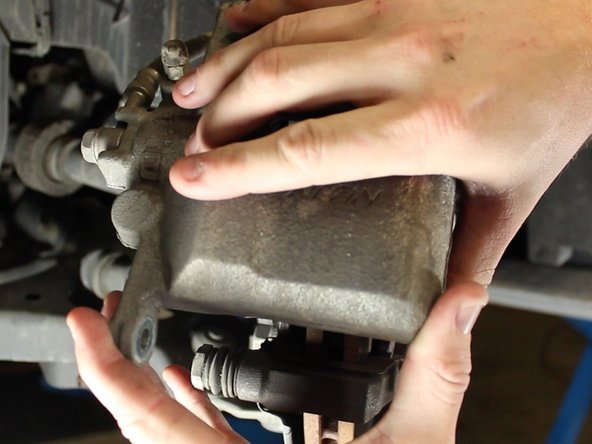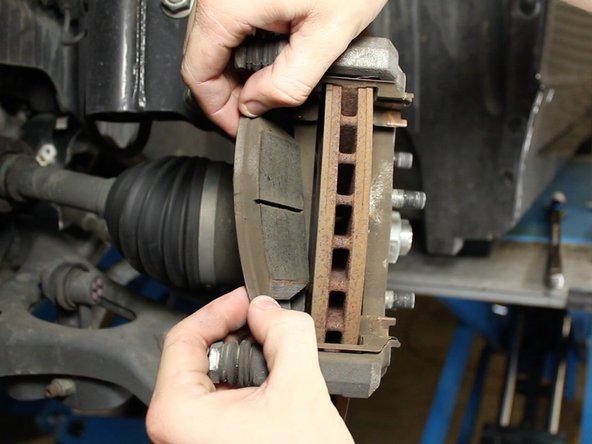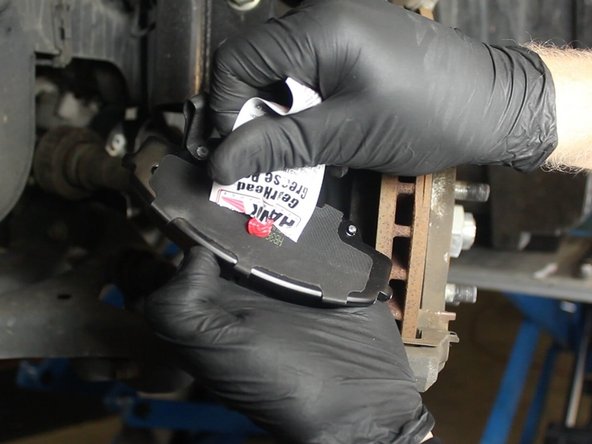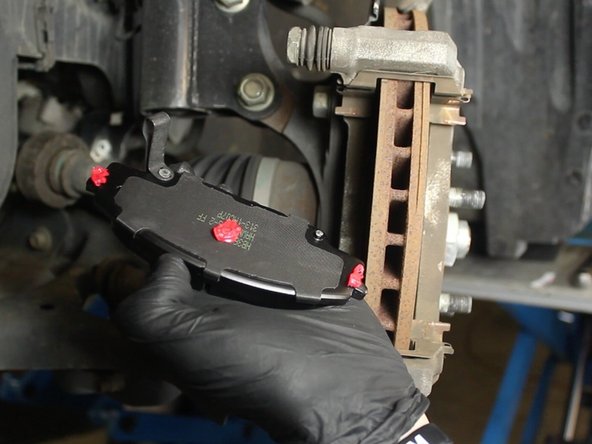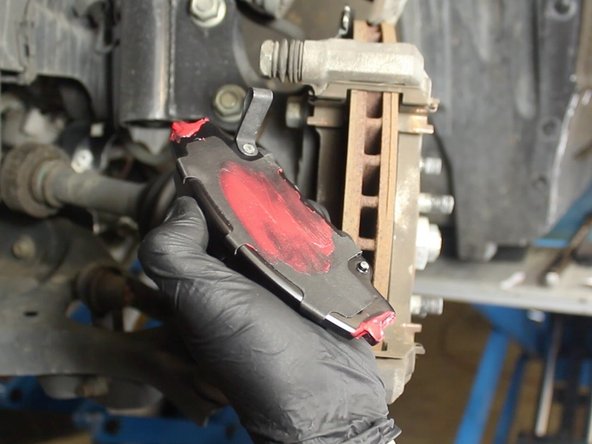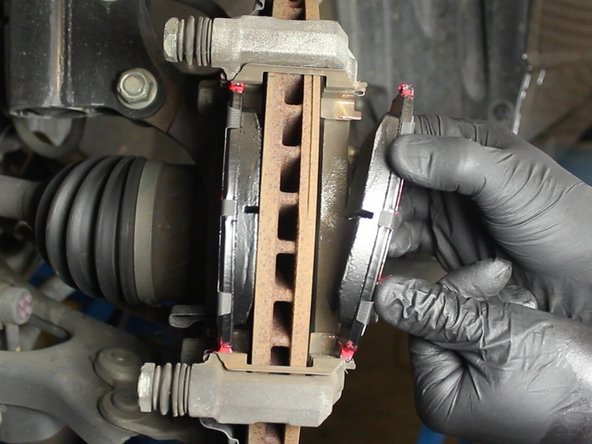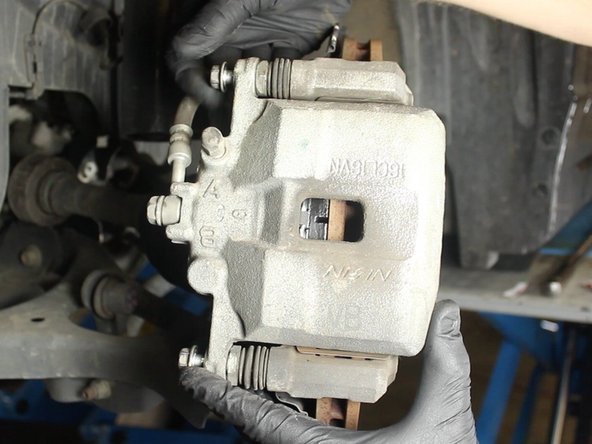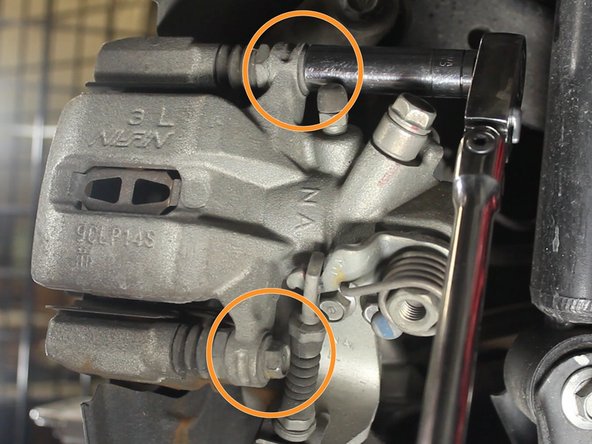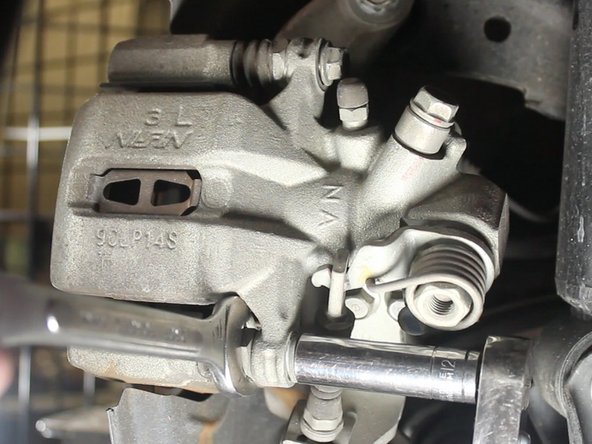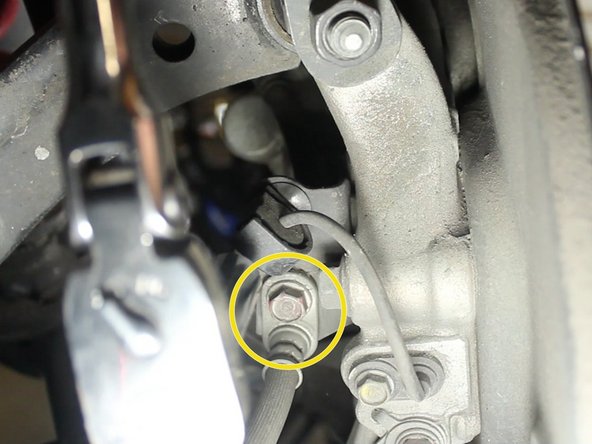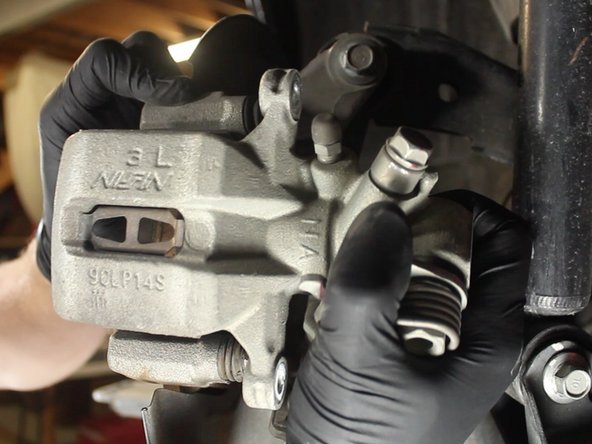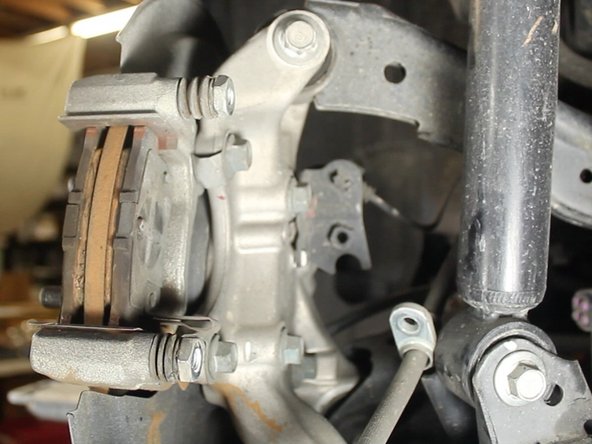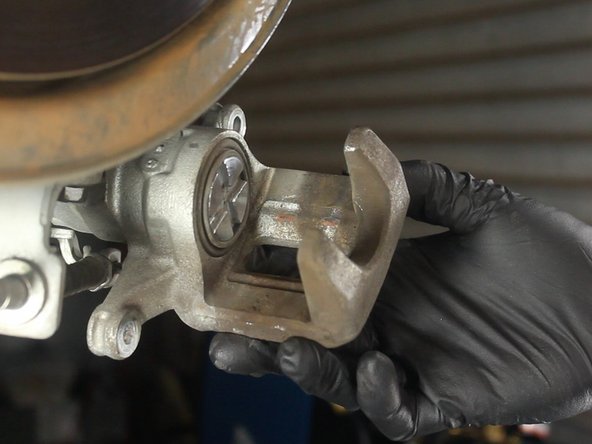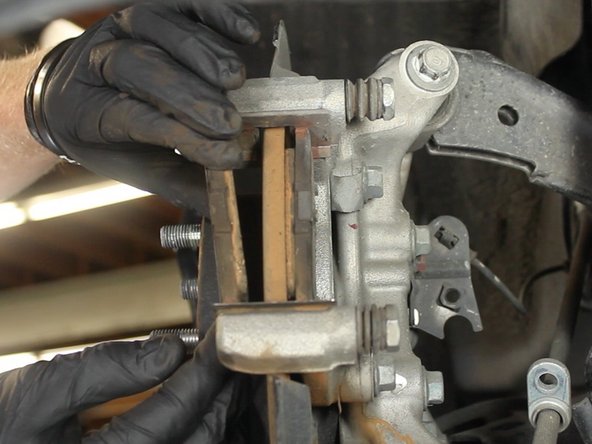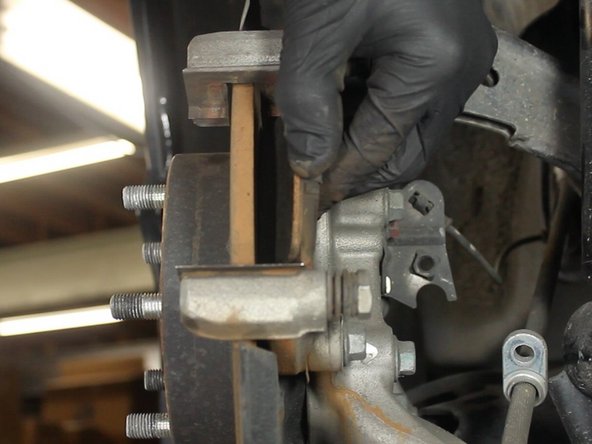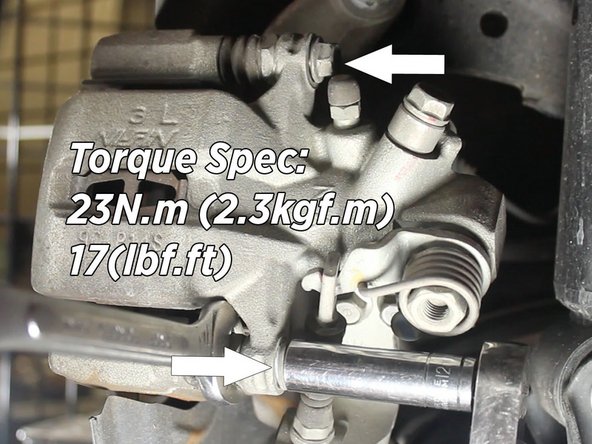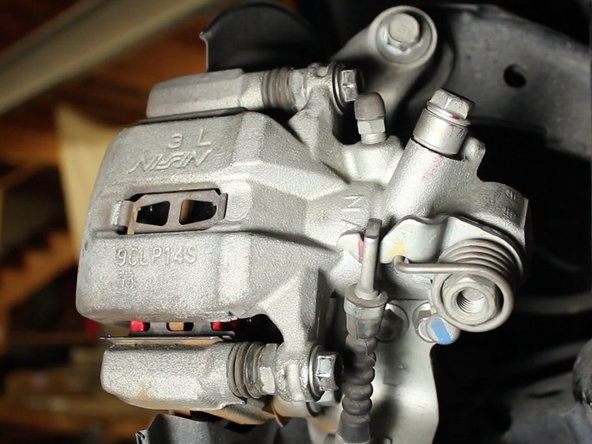-
-
Begin by removing the wheels.
-
-
-
Remove the two 12mm bolts that mount the piston housing to the brake pad housing. This will allow you to separate the two sections for easy access to the pads.
-
-
-
Remove the piston housing by pulling it up and away from the rotor.
-
The brake line will still be attached and pressured to the piston housing. Set aside carefully.
-
Remove the brakes pads.
-
-
-
Using a C-clamp or brake caliper tool to slowly compress the piston. This will allow the housing to be assembled with the new pads.
-
If you have a full brake fluid reservoir, fluid may spill out of it from compressing the pistons.
-
-
-
Apply a small amount brake pad lubricant to the back of each brake pad and to each end where the pad makes contact to the caliper.
-
-
-
Install new brake pads.
-
Make sure the brake pad with the wear indicator is on the inside.
-
-
-
Install 12mm bolts and tighten to spec.
-
Repeat install guide for passenger side front brake pad installation.
-
-
-
Remove 12mm bolts from caliper to separate the caliper to have access to the pads.
-
A wrench may be required to hold the inner locking nut on each bolt of the caliper.
-
-
-
Remove the 10mm bolt that mounts the brake like to the wheel hub.
-
This will allow the removal of the piston housing.
-
If the emergency brake is engaged, you will not be able to remove the piston housing from the caliper. Disengage for removal.
-
Carefully set aside the piston housing.
-
-
-
Remove the brake pad positioning clip to allow access to the piston with the caliper tool.
-
Compress the piston.
-
The rear piston rotates into the housing. Unlike the front piston compressing straight into the housing.
-
-
-
Apply brake pad grease to the back of each brake pad and each end where it contacts the caliper.
-
Install brakes pads.
-
Make sure the wear indicator pad is on the inside.
-
-
-
Re-install brake pad alignment clip and re-install the caliper.
-
Torque bolts to spec.
-







